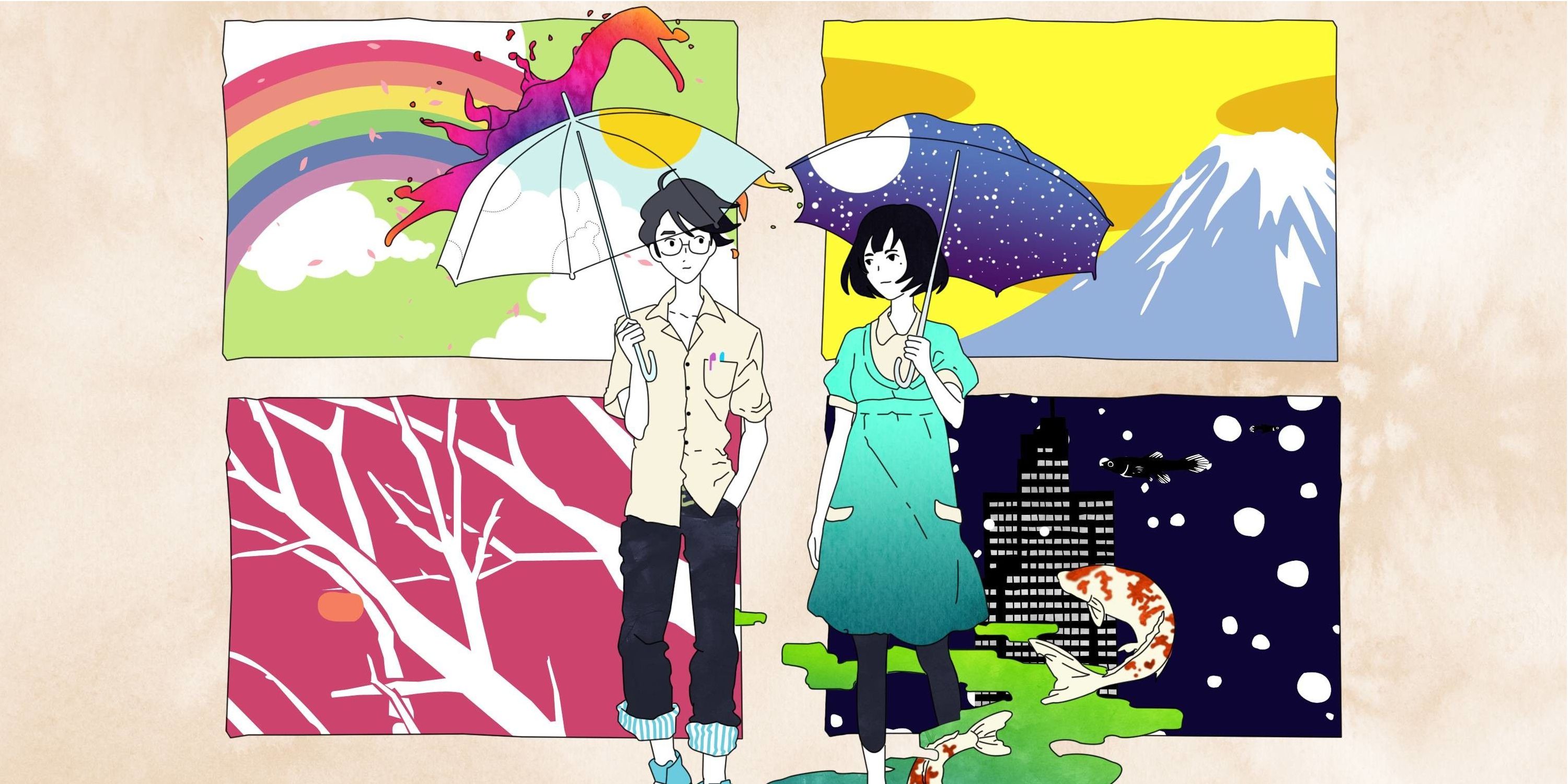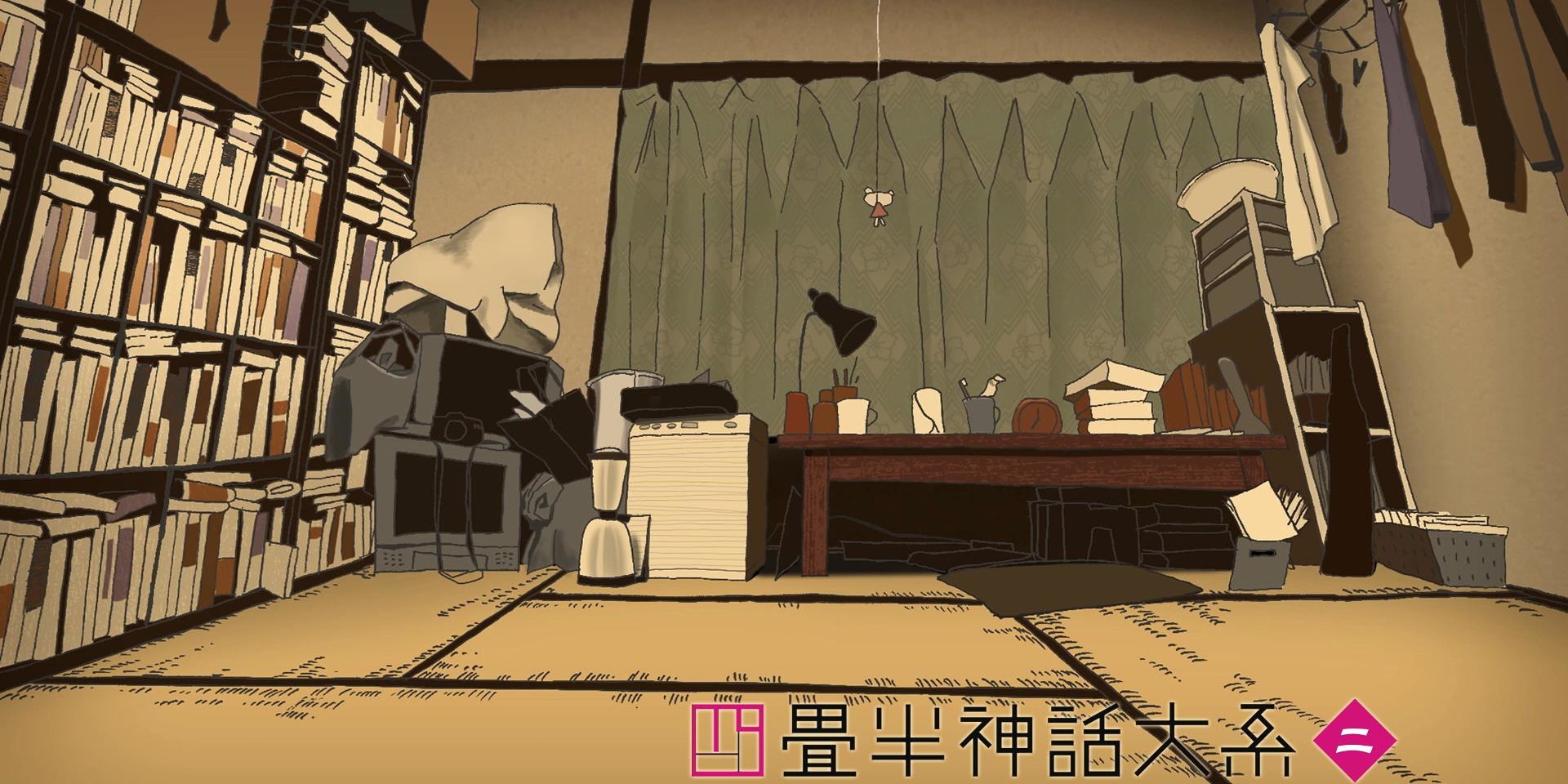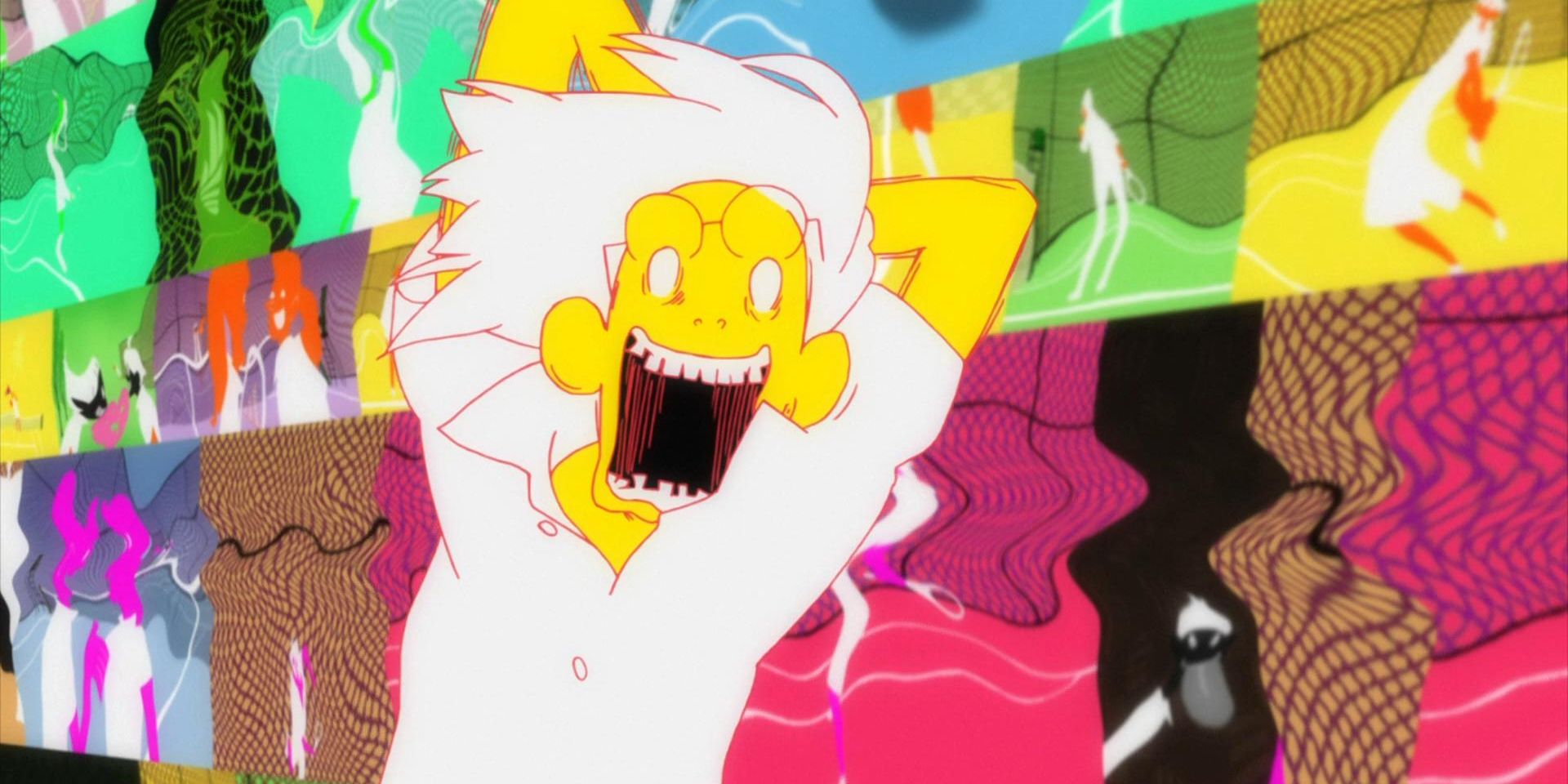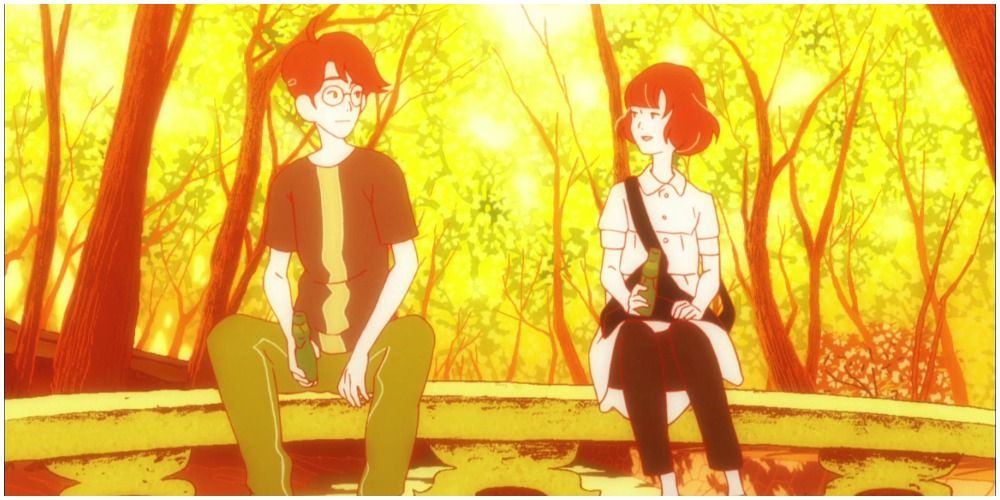Masterpiece is a word that gets used to describe many good shows, but it is not always applied accurately. When it comes to anime, there are certainly many big series that have earned the title, but there are also some underappreciated titles that deserve it. The Tatami Galaxy is one of these.
In a fairly rare occurrence, Tatami Galaxy is actually an anime adapted from a book. The original novel was written by Tomihiko Morimi and released in 2004. In 2010, it received an anime adaptation, directed by the legendary Masaki Yuusa, who is behind other great anime like Japan Sinks and Devilman Crybaby. The book’s cover was also illustrated by Yusuke Nakamura, whose art you might recognize from Asian Kung-Fu Generation’s various album covers. Nakamura was also the character designer for the anime adaptation, fusing his striking art style with Yuuasa’s fluid animation style. But what is it about this adaptation that earns the title of a masterpiece?
The Infinite College Life
First of all, what is Tatami Galaxy about? The story stars an unnamed protagonist, who is often referred to as “Watashi”, as that is the Japanese word for “I” or "Me", and the only way he ever refers to himself. We find Watashi in a position some anime fans might actually relate a lot to. He’s just graduated highschool, but regrets that his social life there was not as full and exciting as he wanted. As he enters into a new life as a College student, he vows to make things different. He dreams of being loved by others and finding a girlfriend, so he commits himself to joining a social circle, excelling, and getting to know people. This however, is not to be.
By the end of the first episode, Watashi has already failed at his goal. He just couldn’t make the connections he wanted to, and instead attracted the attention of a troll-like man named Ozu. In the first of many twists, episode 2 actually sees the clock turned back to Watashi’s first day, transporting us into an alternate reality, where he chose a different club to join. This ends up being a recurring occurrence. Episode after episode, he fails to reach his dreams, and in the next episode we watch him try it all over again with slightly different decisions. The ending of the story is worth viewing without spoilers, but you can expect it to get even more interdimensional and bizarre, as Watashi attempts to finally break free of his endless cycle of loneliness.
Masaki Yuasa At His Finest
Anyone who’s seen his other work in animation will know Masaki Yuasa for his unique animation style. Yuasa enjoys working with simple art styles and character designs, which allow him and his teams to animate much easier and more fluidly. Devilman Crybaby was famous for its borderline inhuman animation at times, especially where the demonic characters were concerned. He doesn’t mind going off-model, and often actively bends and twists his characters’ proportions in order to fit the desired flow of a scene. Tatami Galaxy features many of the same stylistic choices.
The visuals tend to match the story’s feeling more than its actual events, and this can make it a bit hard to keep track of. Everything is portrayed from Watashi’s perspective, so the visuals and animation bend to his mental state. When he’s panicked, things might become more abstract, and when he gets drunk the colors shift and the background becomes less visible. His constant narration also goes by at lightning speed, imitating the panicked way his mind processes information and reacts to situations. Even the other characters are portrayed through his eyes, so it’s never clear if people like Ozu are as malicious as they appear, or if that’s simply how he views them. Few other anime go this far to put us into the protagonist’s headspace.
A Message of Acceptance
All these stylistic choices serve a fundamental purpose. The main crux of the story is Watashi learning to abandon his unhealthy views on life and relationships. We get to really examine him as a character, and the many negative ways he sees the world. Even when he chooses not to sleep with a drunk girl, his self hatred is too strong to even be satisfied with doing the right thing. He continues to hunt for his dream social life, but consistently ignores and undervalues the connections he does manage to make. At one point he even seriously considers abandoning possible romantic interests to be in a relationship with a doll.
For those who share a lot of the insecurities and longing for connection that Watashi feels, Tatami Galaxy is a beautiful story that teaches self acceptance and perseverance. It feels made specifically for them and their struggle. For everyone else though, it still stands as an expertly crafted anime that perfectly explores its main character using every tool animation as a medium offers.




